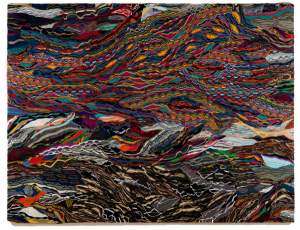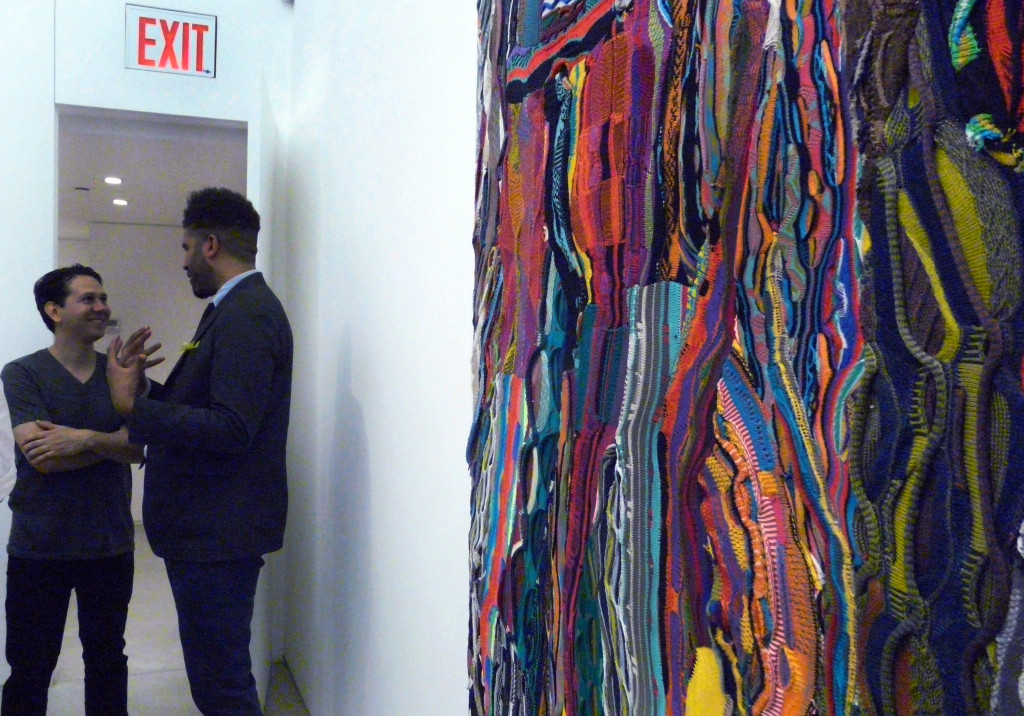
Jayson Musson participates in ‘Laugh-In: Art, Comedy, Performance’ in the Museum of Contemporary Art in San Diego. From January 23 until April 19.
About Jayson Musson
In writing, performance and visual art that incisively satirizes and confuses pop culture and the art world, Jayson Scott Musson provokes the boundaries that define cultural stereotypes. Musson’s most well-known project is Hennessy Youngman, a character who hosts an episodic Internet series, Art Thoughtz, in which he pits hip-hop and art world idioms against each other in a dual parody of cultural clichés. Musson’s consideration of a public extends beyond the confines of art institutions, deliberately entering the open arenas of mass media. Engaging hybrid media and contexts, Musson considers writing to be the root of his creative output, providing him with a springboard from which to translate personal observations into public expressions.
A major theme of Musson’s is African-American social identity, recognizing “blackness” as a role conferred by a history of discrimination. Musson inhabits certain racial stereotypes in order to displace them and conjure a more ambivalent identity, one that comes closer to reflecting his personal experience of being black. “PackofRats,” Musson’s MC name in the Philadelphia-based hip-hop group Plastic Little, was an early persona that Musson once likened to the disaffected, nihilistic main character in Fyodor Dostoevsky’s Notes from Underground. PackofRats posed as a dubious public figure that used the in-your-face lyrics of gangster rap and hip-hop to vocalize his own feelings of displacement economically and socially. A rat also was the insignia on a series of text-based broadside posters entitled Too Black for B.E.T.(2002-06), a project musing on racial identity in America in the aftermath of 9-11 and Hurricane Katrina. Musson explored a more intimate voice in the confessional column “Black Like Me” for the Philadelphia Weekly (2007), where he opined on such topics as love and relationships, Star Wars memorabilia, and Al Qaeda.
 Installation view with the artist, 2012, Salon 94.
Installation view with the artist, 2012, Salon 94.
In 2010, while in graduate school for studio art, Musson developed the persona of Hennessy Youngman – a name that plays on the comedian Henny Youngman, famous for his one-liners, and a liquor that is a status symbol in the hip-hop world. Just as PackofRats caricatured the exaggerated claims of rappers, Hennessy Youngman hilariously deflates the exclusionary, pretentious terminology of art discourse. In Art Thoughtz— a series of short, talking-head addresses posted on YouTube—Youngman offers his irreverent views on topics such as relational aesthetics and institutional critique, the buzz around Damien Hirst’s dot paintings, and the commodification of art. In addition to exposing the art world’s stratification, Art Thoughtz is an empathetic account of any artist’s struggle to define a unique and authentic identity, with the burden of art history upon him or her. In one of the most effective episodes, Youngman analyzes the power of personal mythology, likening how this has been used by seemingly polar opposites Joseph Beuys and Jay Z.
 2012.
2012.
Art Thoughtz conflates Musson’s identity as an outsider with the insider game of the art world, further expressing his experience of a segregated culture. In an interview in the UK magazine “It’s Nice That,” Musson observed, “Hennessy was created to explore the dissonance between speaker and speech. I thought it would be interesting to see how Artspeak? would sound coming out of the mouth of someone without the seeming cultural authority to discuss what he was discussing. It’s no secret that the world of art is rather isolated, a small world with high fences. Coming out of a background of making rap music, being I guess what you’d call a “practitioner” of hip-hop then receiving a scholarship to get an MFA, I came into contact with fine art with an entirely different background, language and understanding of what art is, so with Hennessy, if I could play around with this art history, render it a victim to the alien’s tongue, to render the ideas of the culture of fine art in a method unnatural to it, then I thought that would be a good deed to humanity. The jury is still out.”
Jayson Scott Musson was born in Bronx, NY in 1977. Musson lives and works in Brooklyn, NY.
(text from website Musson)
